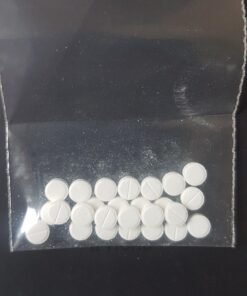Diclazepam
€16.45 – €411.00
Buy Clean and pure Diclazepam [>96.0%] direct from our online shop
Shipping to USA, EU, NZ, AU *
*for research purposes only. human consumption is against our terms of service.
benzodiazepines produce a variety of effects by binding to the benzodiazepine receptor site and magnifying the efficiency and effects of the neurotransmitter gamma aminobutyric acid (gaba) by acting on its receptors. as this site is the most prolific inhibitory receptor set within the brain, its modulation results in the sedating (or calming effects) of diclazepam on the nervous system.
| bulk discount: | |
| 1 Gram | 16.45 |
| 3 Grams | 37.00 |
| 5 Grams | 51.50 |
| 10 Grams | 98.50 |
| 25 Grams | 226.00 |
| 50 Grams | 411.00 |














Reviews
There are no reviews yet.